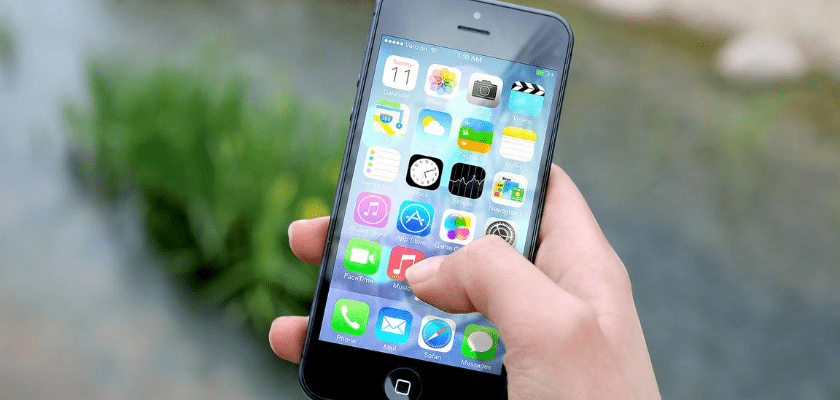A mobile app is a business’s identity. It is something that a business identifies itself with and is recognized by. Therefore, not only should the app be elegant to look at, but it should also promise smooth operation.
The app could be extremely intuitive and tastefully made, but if the most vital aspect of the app – being functional – is overlooked, it will not gain mass acceptance. In this fast-paced mobile world, where a new app is developed every second, users have no patience with apps that are slow or ridden with bugs.
Quality analysis is an integral component of any application’s life cycle. As apps get more and more complex, a mobile app development company needs experienced quality analysis professionals who can provide end-to-end solutions and assess the app on a deeper level. While defects are inevitable during development, they can largely be identified, fixed, or prevented entirely long before they reach the marketing environment. The job of an experienced quality analyst is cut out for him – plan time and procedures to fix bugs, reduce production defects, boost overall software quality, reduce regressive mobile app issues, and ensure customer satisfaction. Basically, a good quality analyst examines the mobile app and tries to uncover the flaws that escaped the sight during the design and development process, and then tries to fix it.
Overall, quality analysis is a vital process that ensures that end-users get not only a functional user interface but also the best experience possible when using the app. This is accomplished by evaluating the app on three fundamental aspects.
- Client Brief
- Design
- Functionality
- Satisfying Client Brief: This step takes into account the brief given by the client and documented in the client-approved records. The QA tester is responsible for matching the client expectations with the app developed and points out and fills the gaps. Requirement testing is relevant throughout the development phase of the app.
- Design Testing: This step looks into the appearance and the feel of the app and assesses whether it matches the proposed design and overall layout.
- Functionality Testing: The functionality testing phase evaluates both – the UI (User Interface) and the UX (User Experience) side of things. It is usually the last step before the app is rolled out for consumers. In this phase, the app is tested on various platforms and devices to ascertain if it is ready to have a problem-free run for the users. Once this step is taken care of, the app is ready to be rolled out into the market.
Highlights of Contents
7 Practices Can be Adopted by Mobile Development Company to Improve Quality Analysis (QA) Process
Following seven practices can be adopted by a mobile app development company to improve the QA process throughout the app development life cycle to resolve quality issues and make the QA process more efficient.
1. Involve the QA Team in the Planning Process
When it comes to product refinement, a QA analyst is more useful as compared to an app developer as he or she has observed and resolved issues that have occurred while coding and has a better idea of where developers tend to go wrong. The quality assurance team is also better equipped at understanding what the clients want and the user’s perspective.
Therefore, in order to eliminate unclear and contradicting requirements and improve the end user’s experience, the mobile app development company should involve the QA team members in the clarification and prioritization of the tasks and let them give their inputs in planning for clarity, consistency, testability, and traceability of the app created.
2. Make Quality Analysis A Priority
Most of the time, when you hire mobile application development companies in the US, the QA team comes in at the end of the process to figure out and explain what went wrong with the app. The mobile app developer takes months to develop the app, only to be made to realize in the end that the second or the third step should have been done differently. However, when the mobile app development services are clubbed with quality analysis, you can get a head start in the process and save precious time and money.
3. Integrate Early
Integrating quality analysis practices in the early stages of mobile app development services and ideation has been proven to improve mobile app development services significantly. It allows business owners to not release their app sooner but also ensures a swifter and much more convenient approach for the mobile app developer.
4. Make Aggressive Regression Testing a Habit
Regression testing is a type of software testing which is used in the event that a change is made to an app component when a defect is detected. Once the alteration is made, this method can confirm or deny the functionality of the component that was changed.
Regressive testing should become an active habit for the remote mobile app developer, and should ideally be performed on a daily, bi-weekly, or maybe weekly basis depending on the size of the app and the changes suggested. The more often regression testing is performed by the hired mobile app developer, the more easily and quickly can the issues be discovered and resolved. This will lead the mobile app development company to create an app that is more stable.
5. Optimize Automation in Testing
Repetitive errors can be easily reviewed by automating certain tasks and scheduling them on a regular basis. Integrating an error monitoring software can ensure that the hired mobile app developers team is made immediately aware of the errors the minute they are identified. This can go a long way in helping them save time on testing.
6. Implement A Scalable Approach
Mobile app development that does not incorporate a thoughtful design and architecture affects the app performance, even if new resources are added regularly. Scalable tests help the remote mobile app developers to find the saturation point of a mobile app beyond which it does not function in a reliable manner. A scalable approach to testing is essential to identify any bottlenecks that hamper the app’s performance.

7. Take Code Quality Measures
Hire a mobile app developer who can improve the testing process quality and make it measurable, documented, reviewable, and tracked. An important aspect of quality code is its simplicity and effectiveness that guarantees product stability.
Quality assurance is one of the most important aspects that need to be looked into when designing an app. Improving app quality does not mean employing more resources, but better resources. Effective QA operations make sure that the app gets released in time and is bug-free. QA is a time-intensive and an effort-intensive process. Therefore, following the right QA procedures mentioned above from the start can not only significantly save time and effort of the company, but also help release an A-grade product that finds favor with the audience.
Frequently Asked Questions
Q1- What are the main skills to look out for in a quality analyst?
A2- An able quality analyst should have the following skills:
- Knowledge of a broad range of mobile software, applications, hardware, and networks
- Strong programming skills
- A fair understanding of the business model
- An ability to think in the abstract and understand what will work best for the app.
Q2- Enlist the best testing practices.
A2- The best QA testing practices include:
- Test one thing at a time
- Define clear objectives for the test
- Focus on each feature individually in terms of aesthetics and functionality
- Use regression tests
Q3- What are the steps included in a QA process?
A3- QA process includes the following steps:
- Analyze requirements
- Plan tests
- Design the test methodology
- Design a process to automate repetitive tests
- Execute tests and report defects
- Run re-tests and regression tests
- Run release tests
